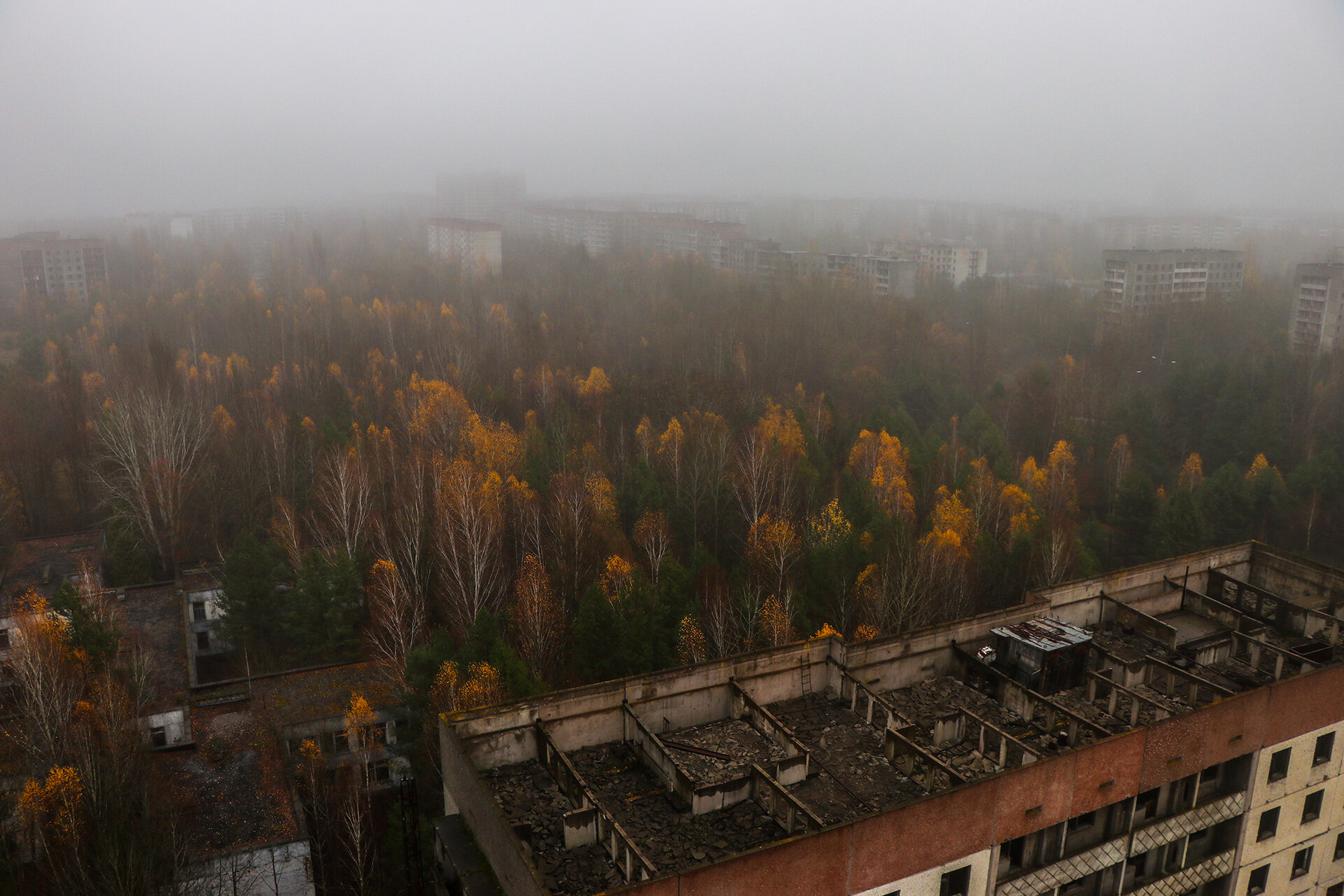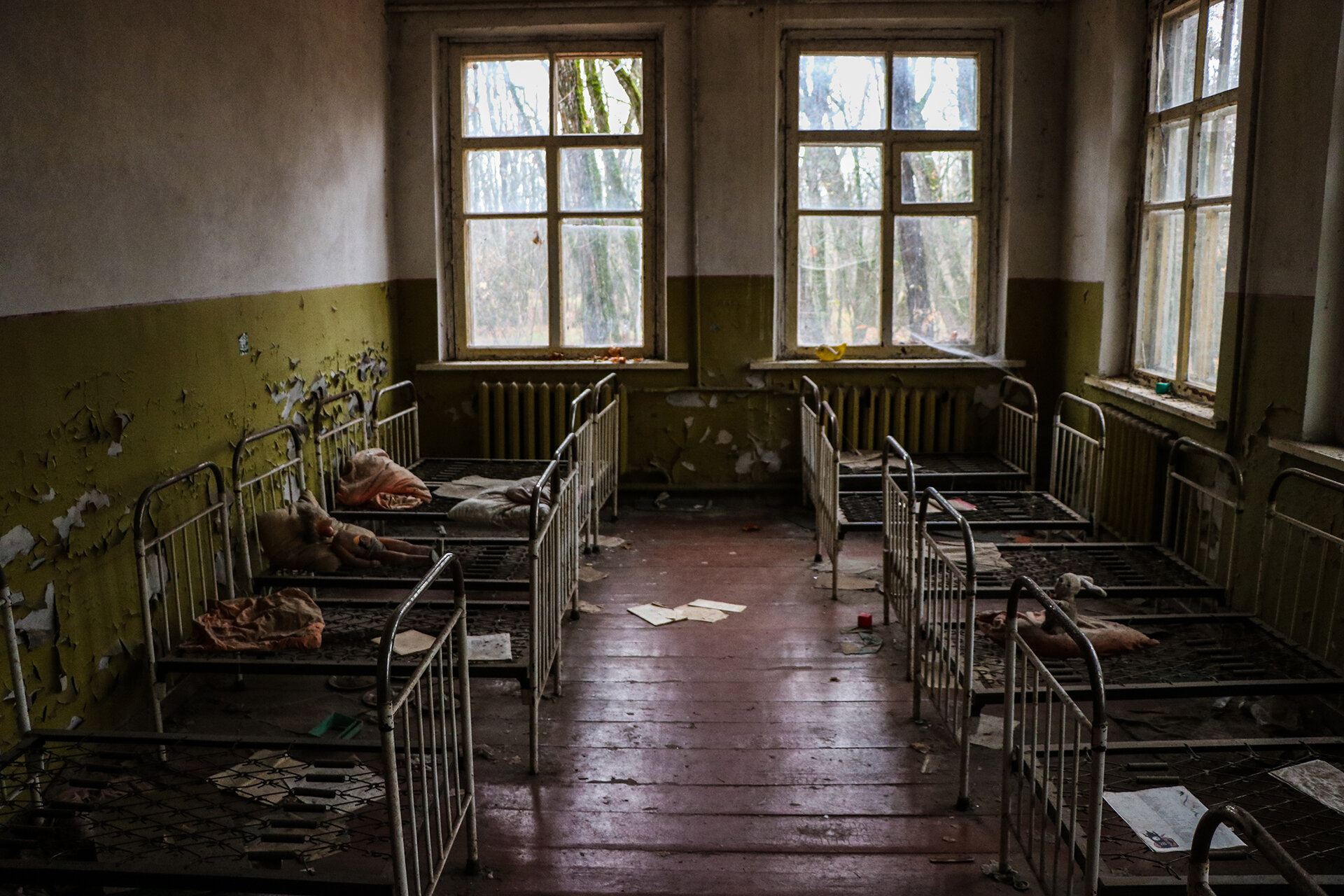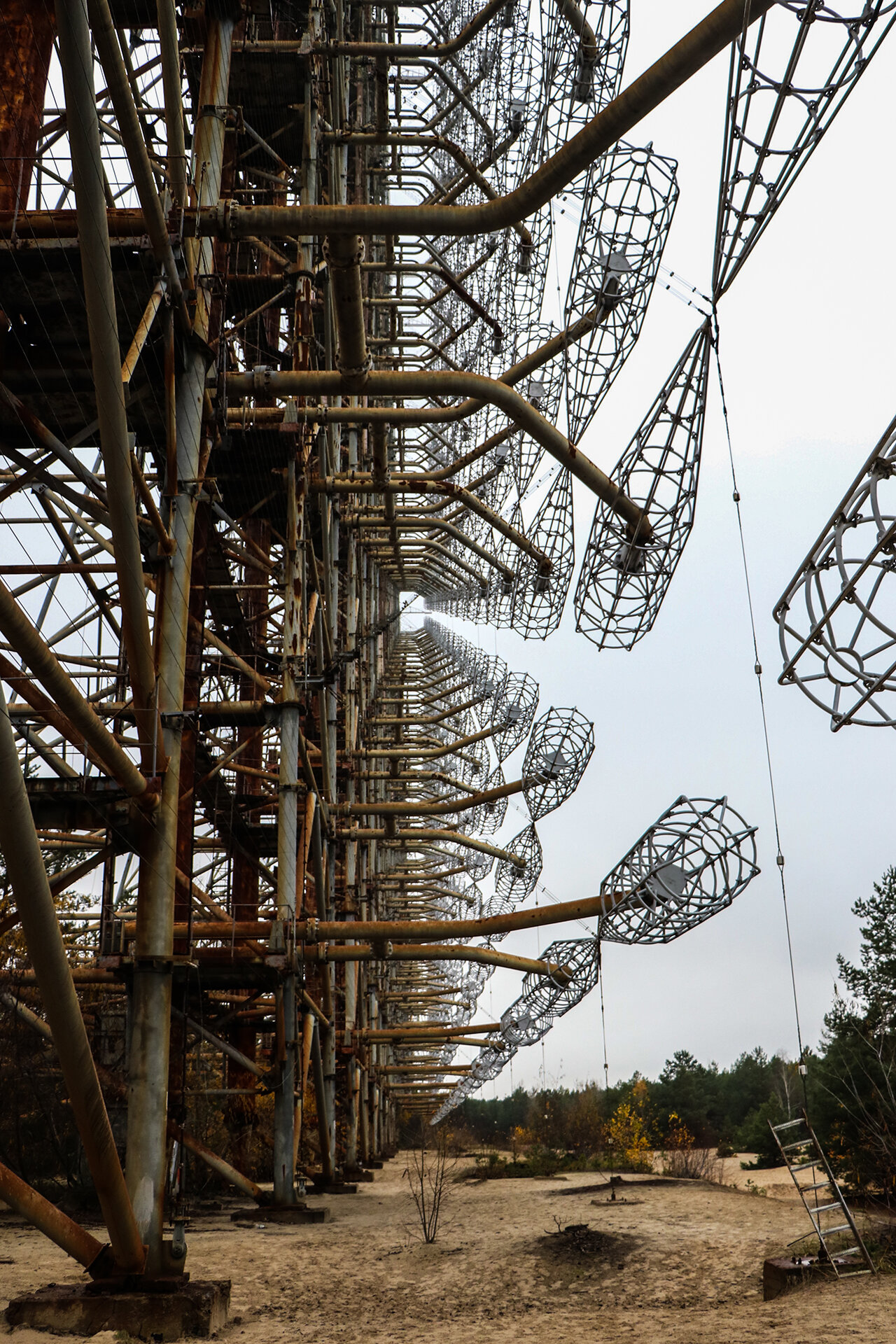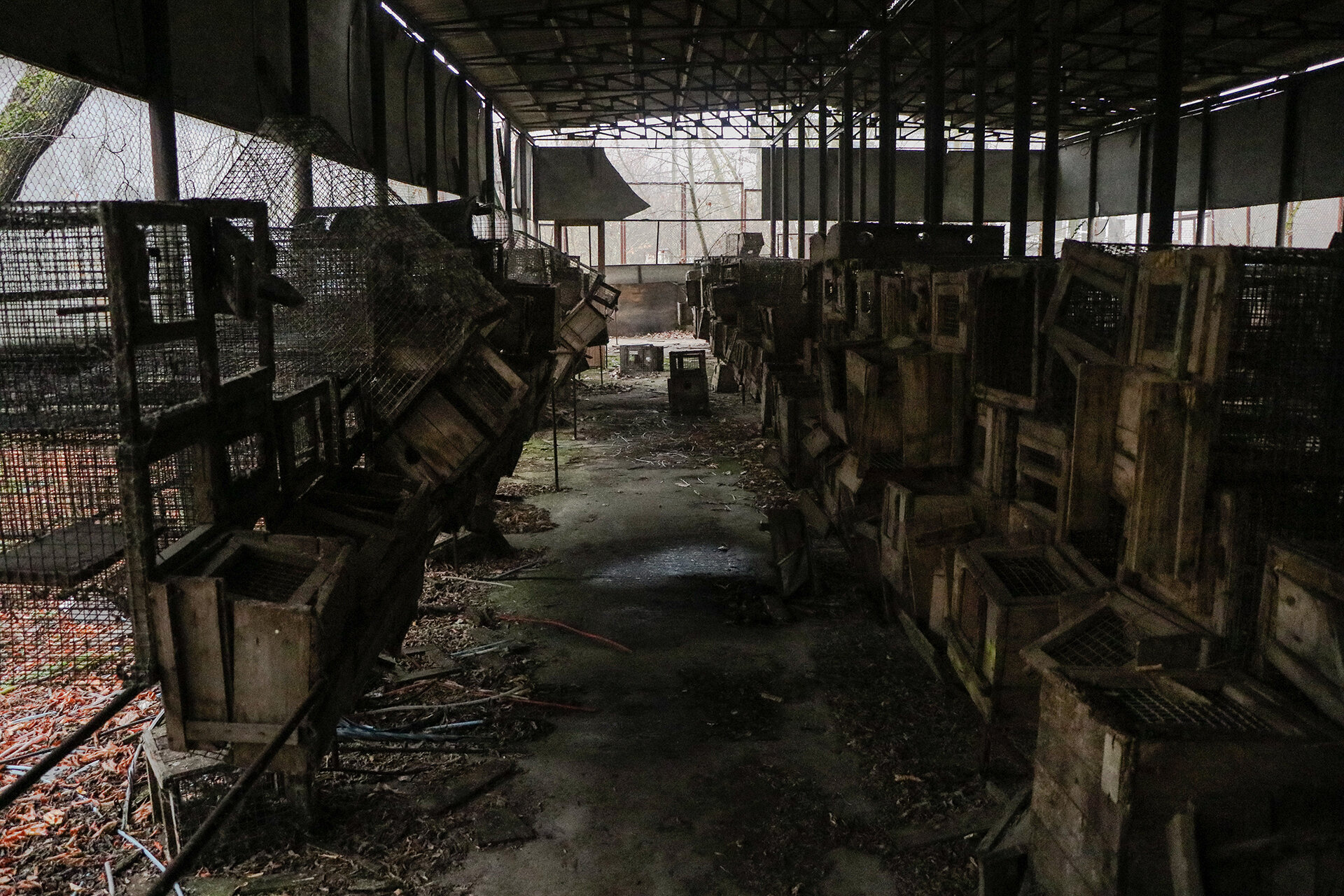A short tour through the Chernobyl Exclusion Zone - 2019

From atop a deserted flat building you get a sense of size of the radiation zone. You also get a sense of just how much nature has reclaimed the land. What was once controlled and humanised is now wild and free.

After the explosion there was a clean up operation to try to remove as much radioactive material as possible. Some was transported away by boat, but the metal the boats were made from absorbed the radiation and as a result the boats themselves were sunk here to try to reduce the further spread of radiation.

This nursery is the only standing building left in this village. It was the only building not made from wood. After the explosion as part of the clean-up effort the Soviets believed they should bury everything they thought absorbed radiation. This included the wood that made up all of the surrounding buildings.

All schools within the radiation zone had gas masks. There would have been one mask for each pupil and teacher, and here you see all of them within the school spread across the floor of a classroom. No one knows if they ended up like this before the explosion, during the panic or years later.

Within the zone there were summer camps available to everyone living near the power plants. At these woodland camps, families owned cabins and could decorate them how they liked. The Soviets wanted to show that you could have everything living near the reactors. This cheery camp later took a sombre turn when it was used to keep workmen that had been a part of the clean-up operation. They absorbed too much radiation and the authorities couldn't let them leave.

This radar was built to detect American missiles. It was hidden in a secret military base that no one outside the base knew about. The entrance was disguised as a children’s camp so that it was not found. The radar is 146 meters high, 1 kilometre long and cost 3 times what power plants did (they cost roughly the equivalent of £8 billion) and it only worked once detecting a gust of wind, and falsely alerted the station of a missile.

Looters, known by the locals as stalkers, enter the radiation zone in search of things to steal. They enter at night to avoid being caught but normally cannot cover the zone in a day so find places to sleep. This bus was one of such places. Within this bus there was a bed and a notebook saying who had entered and when.

During the clean-up process almost everything was removed and buried. One of the reasons most of the windows in the zone are broken is because everything was thrown out of them to save carrying things down stairs. This piano was an exception, and has not been moved simply because it was too heavy.

The Soviets did not fully understand the effect of radiation. They had a number of captive animals such as dogs, cats, rabbits which were used for testing to gain better understanding. It is thought that these animals escaped after the explosion and descendants of them are the current inhabitance of the radiation zone today.

This fairground is an iconic part of Chernobyl. It had come to the town of Pripyat only a couple of days before the reactor exploded. It remains almost fully intact but it is still highly radioactive as this area was used to wash off the helicopter used in the cleanup effort. The metal of the rides absorbed high amounts of radiation from this.